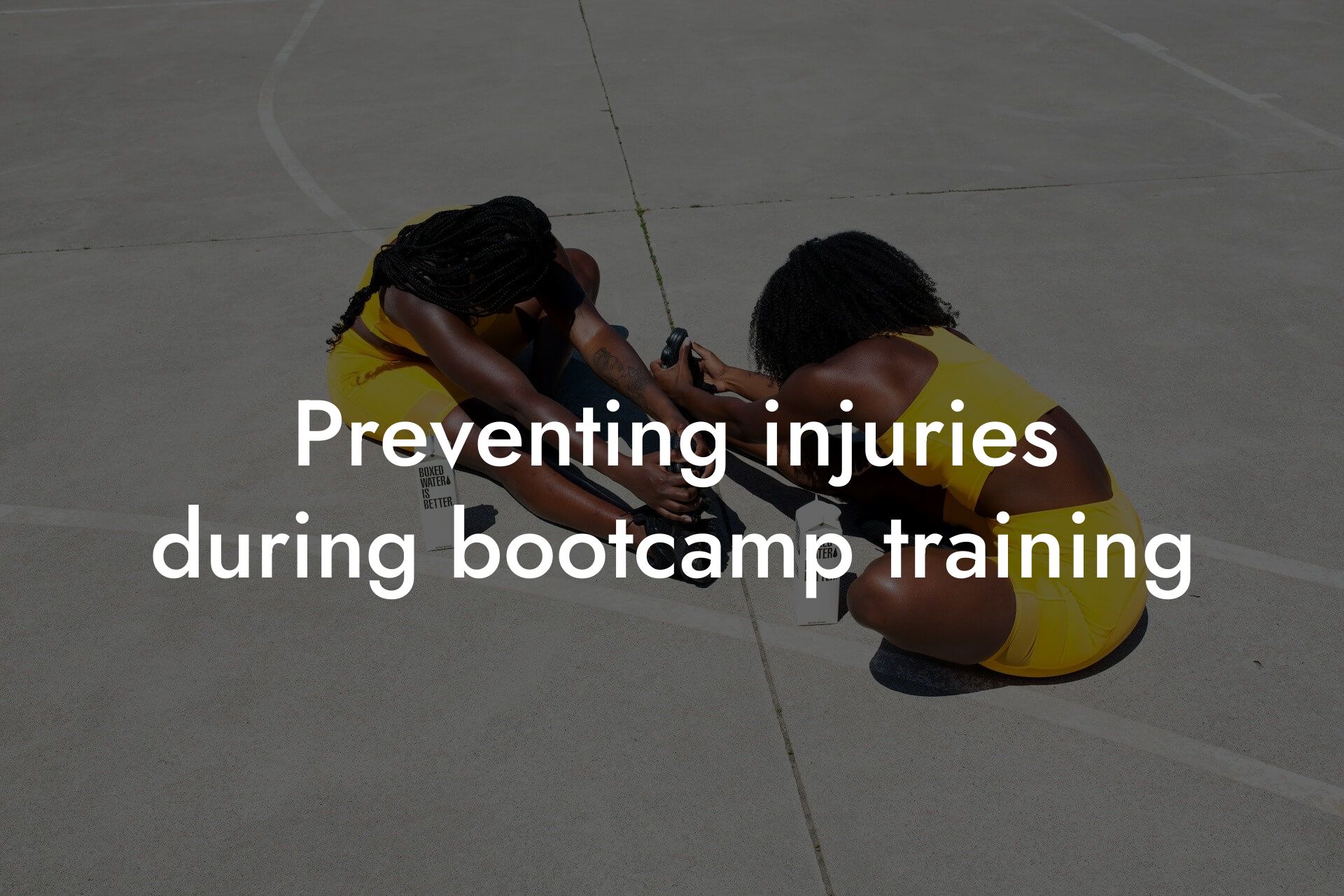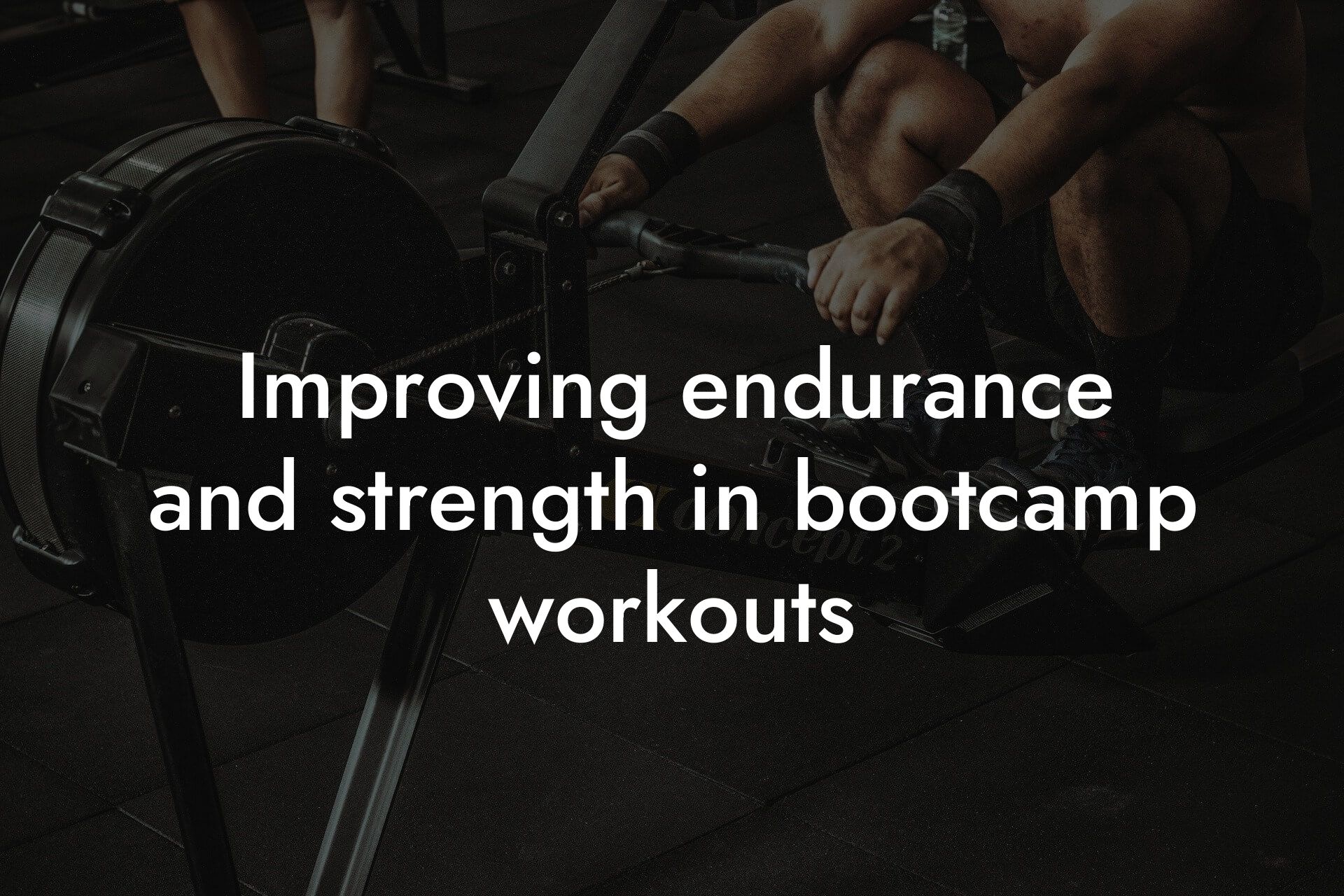As a high-earning professional, you understand the importance of maintaining a strong physical appearance, low body fat, and a well-toned physique. However, with the demands of a busy career, it can be challenging to prioritize your fitness goals. Bootcamp training is an excellent way to improve your physical fitness, but it's crucial to maintain muscle recovery to avoid injury, prevent plateaus, and optimize your results. In this article, we'll delve into the world of bootcamp training and provide you with a comprehensive guide on how to maintain muscle recovery.
Table of Contents
- What is Bootcamp Training?
- The Importance of Muscle Recovery
- How to Maintain Muscle Recovery with Bootcamp Training
- Proper Warm-Up and Cool-Down
- Hydration and Nutrition
- Rest and Recovery Days
- Stretching and Foam Rolling
- Compression Garments and Massage
- Supplementation and Sleep
- DEXA Scan: The Ultimate Tool for Monitoring Progress
- Frequently Asked Questions
What is Bootcamp Training?
Bootcamp training is a type of high-intensity interval training (HIIT) that involves a combination of aerobic exercise, strength training, and agility drills. It's designed to push your body to its limits, improving cardiovascular fitness, building strength, and increasing agility. Bootcamp training typically involves a series of exercises performed in rapid succession, with minimal rest time in between. This type of training is excellent for burning calories, improving overall fitness, and boosting metabolism.
The Importance of Muscle Recovery
Muscle recovery is a critical component of any exercise program, including bootcamp training. When you engage in high-intensity exercise, you cause micro-tears in your muscle fibers. This damage triggers an inflammatory response, which can lead to muscle soreness, fatigue, and decreased performance. If you don't allow your muscles to recover properly, you may experience:
- Decreased strength and endurance
- Increased risk of injury
- Prolonged muscle soreness
- Decreased motivation and performance
How to Maintain Muscle Recovery with Bootcamp Training
To maintain muscle recovery with bootcamp training, it's essential to incorporate specific strategies into your routine. Here are some tips to help you optimize your recovery:
Proper Warm-Up and Cool-Down
A proper warm-up and cool-down are crucial for preparing your muscles for exercise and promoting recovery. A dynamic warm-up, such as light cardio and mobility exercises, can help increase blood flow and reduce muscle stiffness. A static cool-down, including stretching and foam rolling, can help reduce muscle soreness and promote relaxation.
Hydration and Nutrition
Adequate hydration and nutrition are essential for muscle recovery. Ensure you drink plenty of water before, during, and after your bootcamp training sessions. A balanced diet rich in protein, complex carbohydrates, and healthy fats can help promote muscle repair and growth.
Rest and Recovery Days
Rest and recovery days are critical for allowing your muscles to repair and rebuild. Aim to include at least one or two rest days per week, where you avoid any strenuous activity. You can also incorporate active recovery techniques, such as light yoga or a leisurely walk, to promote blood flow and relaxation.
Stretching and Foam Rolling
Stretching and foam rolling are excellent techniques for promoting muscle recovery. Focus on stretching your major muscle groups, including your hamstrings, quadriceps, and chest muscles. Foam rolling can help reduce muscle soreness and improve circulation.
Compression Garments and Massage
Compression garments, such as tights or sleeves, can help improve blood flow and reduce muscle soreness. Massage therapy can also be beneficial for promoting muscle recovery, reducing inflammation, and improving circulation.
Supplementation and Sleep
Certain supplements, such as protein powder and creatine, can help promote muscle recovery and growth. Adequate sleep is also critical for muscle recovery, as it allows your body to repair and rebuild your muscles. Aim for 7-9 hours of sleep per night to optimize your recovery.
DEXA Scan: The Ultimate Tool for Monitoring Progress
At Tano Performance Group, we understand the importance of tracking your progress and monitoring your muscle recovery. Our DEXA scan technology provides a comprehensive body assessment, including measurements of body fat, bone density, and muscle mass. This information can help you tailor your bootcamp training program, optimize your nutrition, and monitor your progress over time.
By incorporating these strategies into your bootcamp training program, you can maintain muscle recovery, optimize your results, and achieve your fitness goals. Remember to prioritize your recovery, and don't be afraid to take rest days or modify your program as needed. With the right approach, you can achieve a strong, lean, and healthy physique that complements your busy professional lifestyle.
Frequently Asked Questions
What is bootcamp training and how does it benefit muscle recovery?
Bootcamp training is a high-intensity workout program that combines strength training, cardio, and agility exercises to improve overall fitness. It benefits muscle recovery by increasing blood flow, reducing muscle soreness, and promoting muscle growth and repair. At Tano Performance Group, we recommend incorporating bootcamp training into your fitness routine to enhance muscle recovery and achieve your physique goals.
How often should I do bootcamp training to maintain muscle recovery?
Aim to do bootcamp training 2-3 times a week, with at least 48 hours of rest in between sessions. This allows your muscles to recover and rebuild, making them stronger and more resilient. However, listen to your body and adjust the frequency based on your individual needs and fitness level.
What are the best exercises for muscle recovery in bootcamp training?
Incorporate exercises that target multiple muscle groups at once, such as burpees, jump squats, and mountain climbers. These exercises promote functional strength, improve muscle endurance, and enhance recovery. Additionally, include exercises that focus on stretching and foam rolling to reduce muscle tension and improve flexibility.
How can I modify bootcamp training to suit my fitness level?
If you're a beginner, start with lower-intensity exercises and gradually increase the difficulty as you build endurance. You can also modify exercises to reduce the impact on your joints or adjust the weight and resistance to suit your fitness level. At Tano Performance Group, our expert trainers can help you customize a bootcamp training program that meets your individual needs.
What is the importance of warm-up and cool-down in bootcamp training?
A proper warm-up prepares your muscles for intense exercise, reducing the risk of injury and improving performance. A cool-down helps your body recover by reducing muscle tension, improving flexibility, and promoting blood flow. Include 5-10 minutes of warm-up and cool-down exercises in your bootcamp training routine.
How can I prevent muscle soreness after bootcamp training?
Delayed Onset Muscle Soreness (DOMS) is a common experience after intense exercise. To reduce muscle soreness, incorporate stretching and foam rolling exercises into your cool-down routine. Additionally, consume a post-workout meal or snack that includes protein and complex carbohydrates to aid in muscle recovery.
What are the benefits of high-intensity interval training (HIIT) in bootcamp training?
HIIT involves short bursts of high-intensity exercise followed by brief periods of rest. This type of training improves cardiovascular fitness, increases caloric burn, and enhances muscle recovery. HIIT also promotes excess post-exercise oxygen consumption (EPOC), which helps your body burn fat and build muscle even after exercise.
Can I do bootcamp training at home or do I need to join a gym?
You can do bootcamp training at home with minimal equipment, such as resistance bands or bodyweight exercises. However, joining a gym or fitness studio can provide access to a variety of equipment, expert trainers, and a motivating community. At Tano Performance Group, we offer personalized training programs that can be done at home or in our state-of-the-art facility.
How can I track my progress and muscle recovery in bootcamp training?
Track your progress by monitoring your workout performance, body fat percentage, and physique. Use tools such as a fitness tracker, body fat caliper, or progress photos to monitor your progress. Additionally, listen to your body and adjust your training program based on how you feel.
What is the role of nutrition in muscle recovery during bootcamp training?
Nutrition plays a critical role in muscle recovery. Focus on consuming a balanced diet that includes protein, complex carbohydrates, and healthy fats. Aim to consume a post-workout meal or snack within 30-60 minutes after exercise to aid in muscle recovery. Additionally, stay hydrated by drinking plenty of water throughout the day.
How can I incorporate stretching and foam rolling into my bootcamp training routine?
Incorporate stretching exercises into your cool-down routine, focusing on major muscle groups such as the hamstrings, quadriceps, and chest. Use a foam roller to roll out tight muscles, improving circulation and reducing muscle tension. Aim to spend 10-15 minutes on stretching and foam rolling exercises after each workout.
What are the benefits of bootcamp training for bone density?
Bootcamp training, which includes strength training and high-impact exercises, can help improve bone density. This is especially important for individuals over 30, as bone density naturally decreases with age. By incorporating bootcamp training into your fitness routine, you can improve bone density, reducing the risk of osteoporosis and fractures.
Can I do bootcamp training if I have a medical condition or injury?
Consult with your doctor or a medical professional before starting any new exercise program, especially if you have a medical condition or injury. They can help you modify the program to suit your individual needs and abilities. At Tano Performance Group, our expert trainers can work with you to create a customized program that takes into account your medical history and fitness goals.
How can I stay motivated and consistent with my bootcamp training routine?
Find a workout buddy or join a fitness community to stay motivated and accountable. Set specific, achievable goals and reward yourself when you reach them. Additionally, track your progress and celebrate small victories along the way. At Tano Performance Group, our expert trainers and supportive community can help you stay motivated and consistent with your fitness goals.
What are the benefits of bootcamp training for mental health?
Bootcamp training can have a profound impact on mental health, reducing stress and anxiety while improving mood and overall well-being. The intense physical activity can also increase the production of endorphins, also known as "feel-good" hormones. By incorporating bootcamp training into your fitness routine, you can improve your mental health and overall quality of life.
How can I incorporate active recovery into my bootcamp training routine?
Incorporate low-intensity activities such as yoga, cycling, or swimming into your rest days to promote active recovery. These activities can help improve circulation, reduce muscle tension, and promote relaxation. Aim to include at least one active recovery day per week into your training program.
What is the importance of sleep and rest in muscle recovery during bootcamp training?
Sleep and rest are critical components of muscle recovery. Aim to get 7-9 hours of sleep per night to allow your muscles to recover and rebuild. Additionally, take rest days as needed, listening to your body and adjusting your training program accordingly.
Can I do bootcamp training if I'm a beginner?
Absolutely! Bootcamp training is suitable for individuals of all fitness levels, including beginners. Start with lower-intensity exercises and gradually increase the difficulty as you build endurance. At Tano Performance Group, our expert trainers can help you modify the program to suit your individual needs and abilities.
How can I incorporate strength training into my bootcamp training routine?
Incorporate strength training exercises such as squats, deadlifts, and bench press into your bootcamp training routine. These exercises can help improve muscle strength, endurance, and overall fitness. Aim to include strength training exercises at least 2-3 times per week into your training program.
What are the benefits of bootcamp training for body fat percentage?
Bootcamp training can help improve body fat percentage by increasing caloric burn, improving insulin sensitivity, and promoting muscle growth and repair. By incorporating bootcamp training into your fitness routine, you can achieve a leaner, more toned physique.
How can I track my body fat percentage during bootcamp training?
Use a body fat caliper to track your body fat percentage. Take measurements regularly, such as once a month, to monitor your progress. Additionally, track your progress photos and weight to get a comprehensive picture of your body composition.
What are the benefits of bootcamp training for overall fitness?
Bootcamp training can improve overall fitness by increasing cardiovascular endurance, strength, and agility. It can also improve body composition, bone density, and mental health. By incorporating bootcamp training into your fitness routine, you can achieve a higher level of overall fitness and well-being.
How can I incorporate bootcamp training into my busy schedule?
Schedule your workouts into your daily planner or calendar, treating them as non-negotiable appointments. Find a workout buddy or join a fitness community to stay motivated and accountable. Additionally, consider working with a personal trainer or fitness coach to help you stay on track with your fitness goals.
Here are some related articles you might love...
- How DEXA scans can benefit bootcamp enthusiasts
- Preventing injuries during bootcamp training
- Improving endurance and strength in bootcamp workouts
- Balancing strength, speed, and flexibility in bootcamp
- Reducing body fat for improved bootcamp workout results
- The importance of bone density in bootcamp fitness
- Strength training tips specific to bootcamp exercises
- How body composition affects bootcamp fitness performance
- Nutrition tips for sustained energy during bootcamp sessions
Zak Faulkner
Zak Faulkner is a leading authority in the realm of physical health and body composition analysis, with over 15 years of experience helping professionals optimise their fitness and well-being. As one the experts behind Tano Performance Group, Zak has dedicated his career to providing in-depth, science-backed insights that empower clients to elevate their physical performance and overall health.
With extensive knowledge of DEXA technology, Zak specializes in delivering comprehensive body assessments that offer precise data on body fat, muscle mass, bone density, and overall physique. His expertise enables individuals to make informed decisions and achieve their fitness goals with accuracy and confidence. Zak’s approach is rooted in a deep understanding of human physiology, combined with a passion for helping clients unlock their full potential through personalised strategies.
Over the years, Zak has earned a reputation for his commitment to excellence, precision, and client-focused service. His guidance is trusted by top professionals who demand the best when it comes to their health. Whether advising on fitness programs, nutritional strategies, or long-term wellness plans, Zak Faulkner’s insights are a valuable resource for anyone serious about taking their health and fitness to the next level.
At Tano Performance Group, Zak continues to lead our Content Team revolutionising how professionals approach their physical health, offering unparalleled expertise that drives real results.




